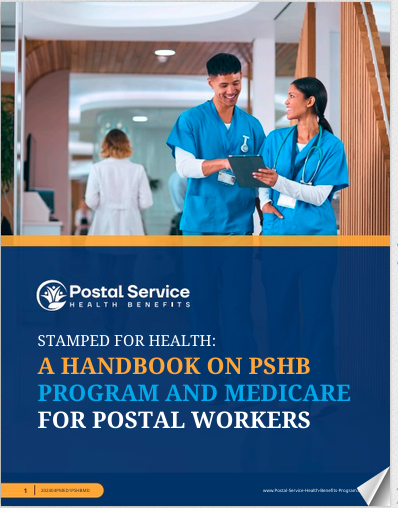Key Takeaways
-
PSHB integrates closely with Medicare, potentially saving you money but requiring careful coordination of benefits.
-
Not understanding how PSHB and Medicare coordinate could lead to unexpected costs or reduced coverage, making proactive planning essential.
PSHB and Medicare: Friends or Foes?
If you’re a USPS employee or retiree, understanding how Medicare interacts with your Postal Service Health Benefits (PSHB) can mean the difference between maximizing your benefits and potentially losing money. With the transition to PSHB effective from January 2025, it’s crucial to get clear on how these two critical programs interact. Here are six essential things you need to know.
1. Medicare Integration is Mandatory for Some
Under the new PSHB program introduced in 2025, certain USPS retirees are required to enroll in Medicare Part B to maintain full PSHB coverage:
-
If you retired after January 1, 2025, and you’re Medicare-eligible, you must enroll in Medicare Part B.
-
If you were already retired before January 1, 2025, enrolling in Medicare Part B is optional, though highly recommended to reduce your healthcare expenses.
If you’re required but fail to enroll in Medicare Part B, your PSHB coverage could be significantly reduced, increasing your out-of-pocket costs dramatically. Always check your specific retirement date and Medicare eligibility status carefully.
2. Medicare Part D Coverage via PSHB: Simplifying Your Prescriptions
One clear advantage of the PSHB and Medicare integration is how prescription drug coverage works. PSHB provides prescription coverage through an Employer Group Waiver Plan (EGWP), effectively replacing the need for separate Medicare Part D enrollment.
This coordinated coverage typically offers:
-
Lower copayments on many prescriptions.
-
A simpler process since you won’t need to manage separate Medicare Part D plans.
-
Automatic enrollment into this combined prescription coverage once you’re Medicare-eligible.
However, always review your PSHB plan’s formulary and copayment details to avoid unexpected prescription costs.
3. Coordination Can Mean Lower Out-of-Pocket Costs
The magic word for retirees when it comes to Medicare and PSHB is “coordination.” Plans within the PSHB often incentivize Medicare enrollment by offering cost-sharing benefits such as:
-
Waived or significantly reduced deductibles.
-
Lower copayments or coinsurance on medical services.
-
Potential reimbursement for Medicare Part B premiums.
To maximize savings, select a PSHB plan specifically designed to complement Medicare. While this integration can save you money, failing to enroll in Medicare Part B if required could backfire financially.
4. Understanding Coverage Gaps is Critical
While PSHB and Medicare coordinate closely, gaps can still occur—particularly if you overlook details. Common coverage gaps include:
-
Services provided by healthcare providers not participating in Medicare or outside your PSHB network.
-
Certain specialty services or treatments not fully covered by Medicare, leaving substantial PSHB deductibles or coinsurance payments.
Reviewing both Medicare and your specific PSHB plan annually during the Open Season (November-December) helps you identify and address these potential gaps proactively.
5. Potential Drawbacks of Medicare Integration
Integration isn’t always seamless, and understanding the pitfalls is crucial. Medicare comes with its own costs, such as the standard Medicare Part B premium, which is $185 monthly in 2025, and a deductible of $257 annually.
-
For some retirees, these additional Medicare premiums may seem steep, especially if you’re healthy and not regularly accessing healthcare services.
-
Enrolling late in Medicare Part B (outside your Initial Enrollment Period) could incur lifelong premium penalties, driving up long-term costs.
Balancing these additional costs against the benefits of integrated coverage requires careful consideration, ideally with the guidance of a licensed agent.
6. Eligibility and Enrollment Windows Are Crucial
Navigating enrollment windows can seem complicated, but getting them right prevents costly mistakes:
-
Initial Medicare Enrollment Period: This seven-month period begins three months before your 65th birthday, continues through your birth month, and ends three months after. Missing this window could result in penalties.
-
General Enrollment Period (GEP): If you miss the Initial Enrollment Period, the GEP from January 1 to March 31 allows late enrollment, but your coverage won’t start until July 1, potentially leaving coverage gaps.
-
Special Enrollment Period (SEP): Retiring or losing coverage qualifies you for an SEP, allowing enrollment outside standard periods without penalty. Act quickly after retiring to secure your coverage without delays.
Timing is critical, so marking these dates on your calendar can save significant stress and financial penalties.
Navigating Costs with Care
Costs are a big concern for retirees, especially when juggling Medicare premiums, deductibles, and PSHB contributions. Here’s a simplified breakdown:
-
PSHB monthly premiums (your share) range approximately from $240 for self-only plans to over $560 for family coverage.
-
Medicare Part A is usually premium-free for those with sufficient work history, but Part B always has a monthly premium ($185 in 2025).
-
Carefully weigh these monthly costs against the potential savings on out-of-pocket expenses to see if integration benefits your specific situation.
The Importance of Annual Reviews
Each year, from November to December, the PSHB Open Season gives you the chance to reevaluate your plan. Annual Notice of Change (ANOC) letters detail changes in premiums, deductibles, coverage, and copayments. Reading your ANOC letter carefully is your best strategy for keeping your costs manageable and your coverage comprehensive.
Making the Most of Your Benefits
By proactively integrating PSHB with Medicare, you can enjoy broader coverage and substantial cost savings. However, this requires active management and regular reviews of your healthcare needs and coverage options.
Don’t underestimate the power of a strategic choice during Open Season or the importance of Medicare deadlines. Getting professional guidance from a licensed agent ensures that your choices align closely with your healthcare and financial needs.
Stay Informed, Stay Covered
Healthcare is dynamic, and your coverage should adapt with your evolving needs. Understanding how PSHB and Medicare work together—or sometimes against each other—is essential. For personalized guidance, reach out to a licensed agent on this website today and ensure you’re making informed choices for your health and budget.






